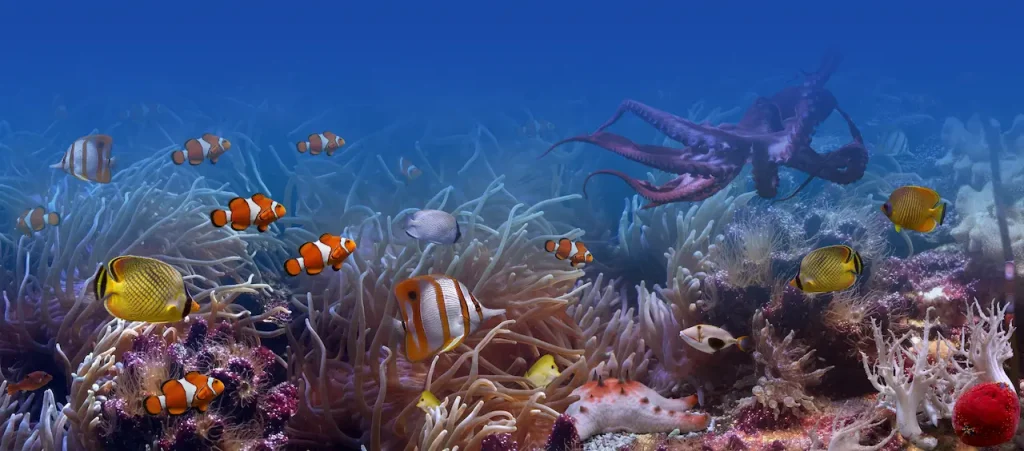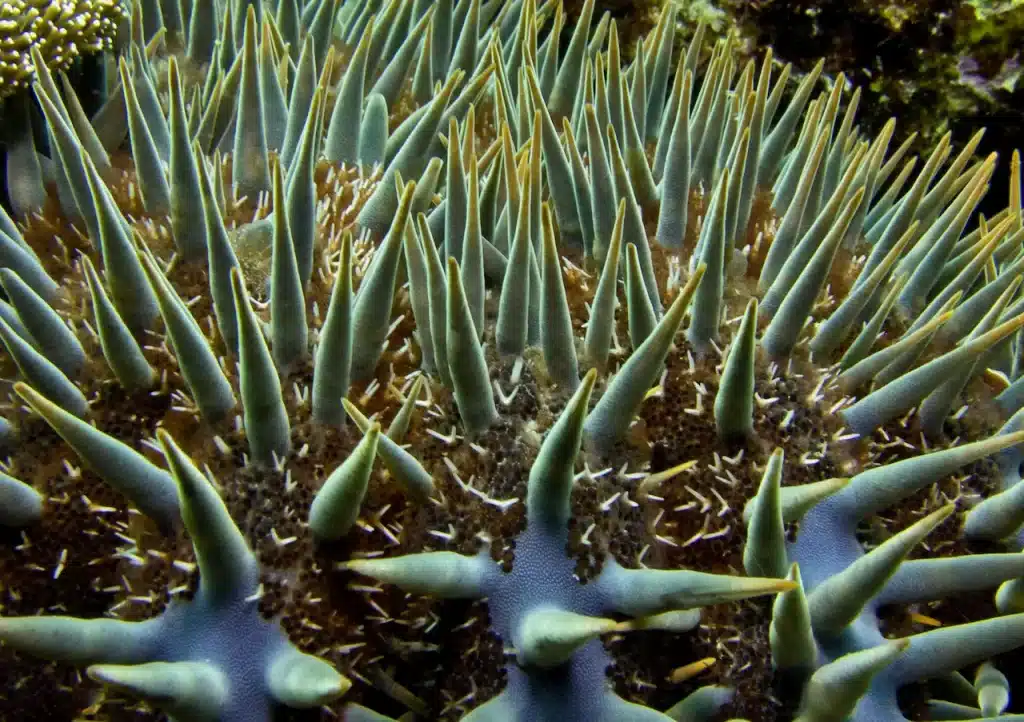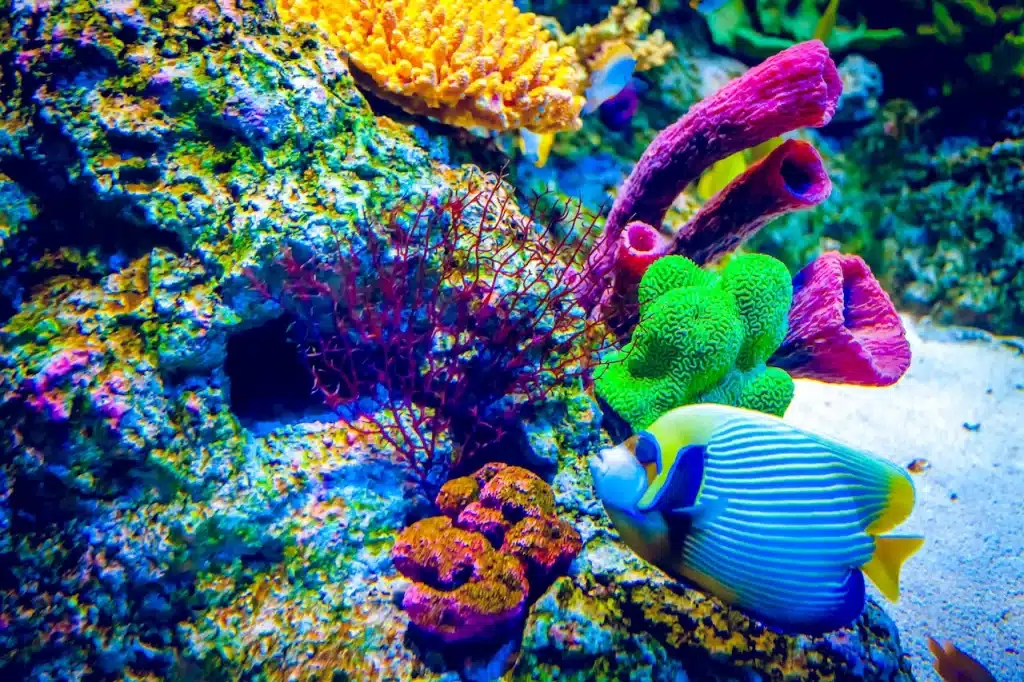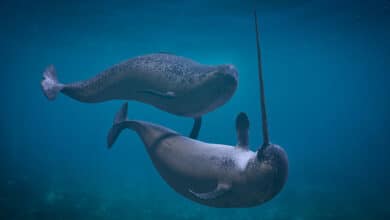What Is The Government Doing To Protect Coral Reefs?
What Is The Government Doing To Protect Coral Reefs? What More Could They Do?
Australia’s Great Barrier Reef is the world’s largest coral reef system, stretching for over 2,300 kilometers along the northeastern coast of Australia. It is home to a stunning diversity of marine life, with over 9,000 species of fish, mollusks, sea snakes, turtles, dolphins, and more inhabiting its waters.
The Great Barrier Reef also holds tremendous economic value, contributing $6.4 billion annually to the Australian economy through tourism, fishing, and scientific research.
However, the Great Barrier Reef is under severe threat due to climate change, pollution, crown-of-thorns starfish, and other factors. Over the past few decades, the Great Barrier Reef has experienced devastating coral bleaching events in which stressed corals expel their symbiotic algae and turn white.

10 Things the Government is Doing to Protect Coral Reefs
These bleaching events have already killed off nearly 50% of the Great Barrier Reef’s corals since 2016.
Protecting and restoring the Great Barrier Reef has become a major priority for the Australian government. Here is an overview of some of the key actions and initiatives the government is taking:
Restricting New Port Development
Port infrastructure development along the Great Barrier Reef coastline poses risks of dredging, dumping of spoil, vessel strikes on marine life, and introduction of invasive species. To limit these risks, the Australian and Queensland governments have enacted policies restricting new port development in the Great Barrier Reef World Heritage Area. This includes limiting capital dredging for new ports or port expansions.
Specifically, the Ports Bill was passed in 2015, which banned the dumping of port-related capital dredge material within the Great Barrier Reef World Heritage Area. The ban aims to stop additional port developments from further damaging coastal and marine ecosystems. Compliance is monitored and enforced with significant penalties for violations.

Reducing Land-Based Runoff
Agricultural runoff containing fertilizers, pesticides, and sediment has been identified as a major cause of declining water quality and reef health.
The Australian and Queensland governments have set targets and implemented programs to improve farming practices and reduce runoff in reef catchment areas. This includes funding for improved irrigation, soil testing, erosion control, and incentives for farmers to adopt sustainable practices.
For example, the Australian government has implemented the Reef Trust initiative, which provides over $330 million to improve water quality.
The funding supports cane, grazing, and dairy farmers to adopt precision agriculture upgrade equipment and infrastructure to reduce runoff and nutrient loss. Economic incentives are also provided for wetland restoration and improved land management.
Tighter Fishing Regulations
Unsustainable fishing practices like overfishing and illegal fishing have been controlled through expanding protected zones, tighter quotas, improved monitoring, and stronger penalties.
Commercial net fishing has been banned across about 20% of the Great Barrier Reef Marine Park. Stricter recreational fishing limits have also been imposed through bag and size limits.
The Australian Fisheries Management Authority (AFMA) sets quotas and restrictions based on scientific stock assessments. New technologies like electronic monitoring systems and onboard observers improve compliance.
Heftier fines have also been instituted, with penalties of up to $400,000 AUD for serious offenses. These stricter regulations aim to support the recovery of overfished populations.
Crown-of-Thorns Starfish Control
The coral-eating crown-of-thorns starfish has caused devastation, recently reaching outbreak levels. To control these outbreaks, the government has funded culling programs involving injecting starfish with bile salts.
Over 390,000 starfish were culled between 2012-2015. Improved monitoring aims to detect population surges early.
The Great Barrier Reef Marine Park Authority (GBRMPA) coordinates extensive tracking and culling efforts, especially on highly impacted reefs.
Divers inject crown-of-thorns starfish with sodium bisulfate, which kills them within 24 hours. Ongoing research also explores potential biological controls like encouraging predator fish species and viruses that infect the starfish.

Boosting Resilience
While mitigating threats is crucial, boosting the Reef’s natural resilience to withstand and recover from threats is also vital.
The government supports active reef restoration research into coral gardening, larval reseeding, and other innovative interventions to assist reef regeneration. Other efforts focus on protecting resilient reef habitats and identifying heat-tolerant coral species.
For example, the Great Barrier Reef Foundation runs reef restoration and adaptation programs backed by over $200 million in public and private funding.
Projects include breeding heat and bleaching-resistant super corals, establishing coral nurseries, scaling up larval restoration methods, and mapping reef sites with higher temperature refuges.
Improving Water Quality
The Australian government has committed over $700 million in funding to improve water quality under the Reef 2050 Plan. This includes support for farmers to adopt practices and technology to reduce fertilizer and chemical pollution entering the Reef.
Wetlands and vegetation buffers are also being restored along rivers and streams to filter out sediments and nutrients.
Major initiatives include upgrading sewage treatment plants in coastal towns to reduce ocean outfalls, tightening regulations on industrial discharge, replacing old septic systems, and partnering with sugarcane growers to trial innovative runoff capture systems.
Multiple agencies coordinate and enforce comprehensive water quality improvement programs.
Stricter Climate Targets
Climate change is the greatest long-term threat facing the Great Barrier Reef. To address this, Australia aims to reduce emissions by 26-28% below 2005 levels by 2030 under the Paris Agreement.
Pressure continues to mount on the government to take more ambitious climate action to save the Reef. Transitioning away from fossil fuels to renewable energy is critical.
The government has also established a $500 million Reef Fund to support investments like clean energy and water infrastructure that benefit the Reef while cutting emissions.
However, critics argue Australia must rapidly phase out coal instead of opening new mines while ramping up investments in large-scale renewable energy projects paired with storage technology.
Monitoring Reef Health
Extensive, long-term monitoring and research programs track the health of reef habitats, water quality, coral bleaching episodes, and recovery.
This data informs adaptive management and allows assessment of policy effectiveness. Satellite monitoring, drones, in-water surveys, and citizen science initiatives all contribute.
The government funds programs like the Australian Institute of Marine Science Long-Term Monitoring Program, an eye on the Reef, the Great Barrier Reef Marine Park Authority’s Reef Health Incident Response System, and CoralWatch’s volunteer reef monitoring.
The findings help identify trends, emerging threats, resilience indicators, and recovery processes.

Raising Awareness
The government supports community education and awareness campaigns on threats to the Reef, conservation behaviors, and the latest research.
This includes educational resources for schools, tourism operator training, and stewardship programs that encourage people to take action to protect the Reef.
Major programs include the Reef Guardians initiative and ReefBlitz, which empower community members to become stewards.
Foundations like the Great Barrier Reef Foundation also fund public outreach campaigns like “Protect Our Reef” to share conservation issues and solutions with the broader public across Australia and worldwide.
Challenges Ahead
While progress has been made, the Australian government faces immense challenges ahead to preserve the Great Barrier Reef for future generations.
Bolder action and funding commitments are still needed to curb climate change, upgrade water treatment infrastructure, transition coastal communities away from reliance on reef exploitation and scale up restoration efforts.
Sustained political will and participation from all stakeholders, including farmers, fishermen, indigenous groups, scientists, tourism operators, and the broader public, will be key.
The fate of the Great Barrier Reef remains uncertain, but the efforts undertaken so far provide some hope that this natural wonder can survive and recover with proper management.
What is the Australian government doing to protect coral reefs?
The Australian government recognizes the immense ecological, economic, and social value of the country’s coral reefs, especially the iconic Great Barrier Reef. Protecting these vital ecosystems has become a major priority, prompting significant government initiatives and policies.
Establishment of marine parks
A key strategy has been the creation of marine protected areas, including massive marine parks, to provide reefs respite from human activities. This includes:
- Great Barrier Reef Marine Park – At 348,000 square km, it is the largest coral reef ecosystem on earth and one of the world’s most significant marine parks. Established in 1975 and managed by the Great Barrier Reef Marine Park Authority.
- Coral Sea Commonwealth Marine Reserve – At 989,842 square km, it is the largest marine protected area in the world and contains important coral reef structures. Proclaimed in 2012.
- Numerous smaller marine parks in Queensland coastal waters with high coral diversity.
Zoning plans regulate activities within these parks, like fishing, tourism, and shipping, based on conservation objectives.
Improving water quality
Polluted runoff from agriculture is a major threat to inshore coral reefs. The Australian and Queensland governments have implemented policies and programs to improve water quality flowing to the Great Barrier Reef, such as:
- Great Barrier Reef Water Quality Improvement Plan – Established in 2003 and updated in 2013 and 2018, it coordinates actions between governments, industry, and communities to reduce pollution.
- Reef 2050 Long-Term Sustainability Plan – The overarching strategy guiding management of the Great Barrier Reef until 2050. It includes goals to reduce pollution and improve water quality.
- Financial incentives for farmers to adopt sustainable practices that reduce chemical and soil runoff.
- Tighter regulations on dredging and dumping of capital dredge material within the marine park.
Climate change action
Climate change is the most serious threat facing coral reefs. Australia aims to reduce greenhouse emissions under international agreements and through domestic policies like a carbon pricing scheme. Other efforts include:
- Investing in reef resilience research to identify interventions that may help reefs better withstand warming oceans.
- Funding projects that actively cool and shade corals to help prevent bleaching during marine heatwaves.
- Reducing other localized stressors on reefs, like pollution and overfishing, to support ecosystem health.
Monitoring and research
Robust science and monitoring are critical for understanding reef health and directing management efforts. Key programs include:
- The Australian Institute of Marine Science’s Long-Term Monitoring Program – Ongoing monitoring of key physical, chemical, and biological indicators across the Great Barrier Reef since the early 1990s.
- The Great Barrier Reef Marine Park Authority’s Eye on the Reef program – A network of vessels, tourists, and citizen scientists reporting observations on reef health and incidents.
- The CSIRO and Bureau of Meteorology’s coral reef monitoring program – Monitoring and predicting responses to climate change.
- The National Environmental Science Program’s Tropical Water Quality Hub – Research to support water quality improvement efforts.
What is the US government doing to save the coral reef?
The United States government recognizes the ecological, economic, cultural, and aesthetic values of the nation’s coral reefs and has made efforts to study, protect, and restore them. Key initiatives include:
Monitoring and research
- NOAA’s Coral Reef Conservation Program – Extensive monitoring, mapping, and research projects focused on U.S. coral reef ecosystems in Florida, the Gulf of Mexico, Hawaii, the Pacific Islands, and more.
- The National Coral Reef Monitoring Program – A partnership between NOAA, EPA, and DOD to monitor the status and trends in coral reef health.
- The U.S. Geological Survey’s Coral Reef Ecosystem Studies – Investigations into geology, biology, climate change impacts and more facing coral reefs.
Marine protected areas
- National Marine Sanctuaries – Designated marine protected areas like the Florida Keys National Marine Sanctuary help protect coral reef habitats.
- The Papahānaumokuākea Marine National Monument in Hawaii – One of the world’s largest marine conservation areas with extensive coral reefs.
Laws and regulations
- The Coral Reef Conservation Act – Established programs to preserve, sustain, and restore coral reefs.
- The Clean Water Act and Coastal Zone Management Act – Regulate point source pollution and land use that can impact reef water quality.
- Fishing and boating restrictions – Help protect reefs from damage and overexploitation.
Restoration and intervention
- The NOAA Coral Restoration Program – Active reef restoration research and partnerships across the U.S. and its territories.
- Investments in restorative measures like coral gardening, stabilization, and pre-emptive transplantation.
- Efforts to develop climate intervention tools like managed breeding and assisted evolution.
International cooperation
- U.S. partnerships with neighbors like Mexico and island nations to conserve shared coral reef ecosystems.
- Membership in the International Coral Reef Initiative to collaborate globally on reef protection.
- Funding reef conservation abroad through mechanisms like the Coral Reef Conservation Fund.
What are 3 ways to protect coral reefs?
There are many ways individuals, governments, and organizations can take action to protect fragile coral reef ecosystems. Here are 3 of the most important:
1. Improve water quality
Reducing land-based sources of pollution, nutrients, sediments, and contaminants flowing from coastal areas is crucial for coral reef health.
Individuals can reduce fertilizer use, properly dispose of chemicals, and use green infrastructure to absorb stormwater. Governments must regulate coastal development, agricultural runoff, and wastewater management.
2. Establish marine protected areas
Designating marine parks, reserves, and sanctuaries limits damaging activities like overfishing, dredging, and anchoring.
It allows reef ecosystems to recover and build resilience. Advocating for protected areas and responsible tourism helps support this solution.
3. Mitigate climate change
Coral bleaching induced by warming oceans is the biggest threat facing coral reefs today. Transitioning to renewable energy, reducing emissions, and pressuring governments and industry to act on climate is critical. Individual energy conservation and lifestyle choices make a difference.
Other important measures include sustaining fish stocks, actively restoring damaged reefs, developing coral nurseries, controlling invasive species, limiting physical impacts from boats and recreation, reducing plastic pollution, and getting involved in reef conservation.
Which government is responsible for the Great Barrier Reef?
The iconic Great Barrier Reef lies off the northeast coast of Australia, within the state of Queensland’s waters. Therefore, both the Australian and Queensland governments share responsibility for its management and conservation.
Australian government
At the federal level, the Australian government oversees the Great Barrier Reef Marine Park and provides most of its financing. Key agencies involved include:
- Great Barrier Reef Marine Park Authority – Manages the marine park and regulates activities within it.
- Department of Agriculture, Water and the Environment – Coordinates national environmental policies and programs that impact the reef.
- Australian Institute of Marine Science – Conducts large-scale research on the reef’s ecosystems.
- CSIRO – Australia’s national science agency undertaking reef research.
- Bureau of Meteorology – Monitors impacts of weather and climate change.
The Australian government also represents the Great Barrier Reef’s interests in international forums and conventions.
Queensland Government
The Queensland government co-manages the Great Barrier Reef Marine Park with the Australian government. Its responsibilities include:
- Managing most islands within the marine park, like national parks and state marine parks.
- Regulating land use, water quality, and fishing and boating activity in coastal areas and catchments impacting the reef.
- Monitoring impacts from coastal and port infrastructure development.
- Contributing to scientific research and training programs for marine park management.
- Assisting with public education and community stewardship programs.
- Providing grants and incentives to reduce agricultural runoff.
Together, coordination between both levels of government is essential for the effective conservation of the largest coral reef ecosystem on Earth.
Conclusion
The Australian government is taking steps to protect the Great Barrier Reef through restrictions on port expansion, programs to improve water quality, tighter fishing regulations, crown-of-thorns starfish control, reef restoration research, climate policy, comprehensive monitoring, and increased public education.
However, the threats facing the Reef are complex, and long-term success will require ongoing funding, innovation, policy improvements, rapid decarbonization, and community stewardship.
The Great Barrier Reef is an irreplaceable global treasure, and its preservation should remain a top priority for Australia. With coordinated action across government, science, industry, and society, there is hope that this iconic reef system can be preserved.




